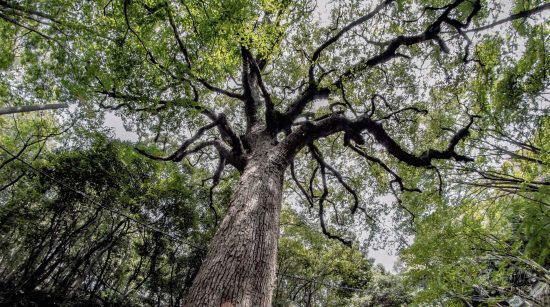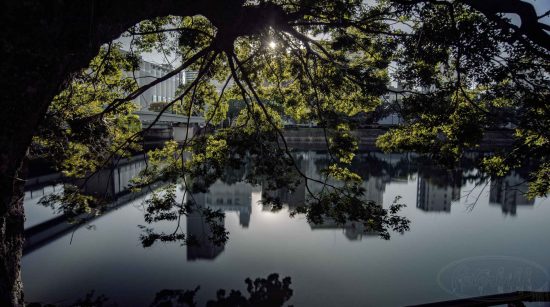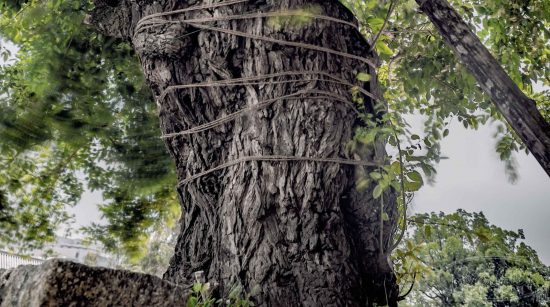Seven Survivors by Peter Bill:
Hiroshima survivor trees that lived through the atomic bombing of Hiroshima
My initial interest in creating time-lapse work stemmed from my painting. I found that I wanted to capture the movement of the light. Watching a beat up Samizdat VHS copy of Godfrey Reggio’s Koyaanisqatsi projected on the crumbling wall of a squat in Prague in the 90’s gave me the idea I could do this with film. I started filming on a Minolta Super-8 camera that had an intervalometer built in with Kodachrome and Tri-X film that could be processed in Prague. I created installation loops with super-8 projectors that were nightmares to manage, but looked fantastic. It was not until I was a graduate student at the University of Washington at the end of the previous century that I was able to collect and digitize my super-8 film. With After Effects I could create a collage of the vision I had held in my mind’s eye for some years.
Since then I have continued to shoot time-lapse in film, and then with a procession of digital cameras starting with the Nikon D200. Currently my camera of choice is a D750, with its wicked sensor that has such a smooth dynamic range. I always try to shoot with primes, mostly using a Nikkor 24mm. I have found that as my eye has matured I no longer crave the widest of the crazy wide-angle lenses available, although I do like to play with full spherical fisheyes, and lust after Tilt-shift lenses.
I have been traveling to Hiroshima for the past 4 years to photograph and create time-lapses of the Hibaku Jumoku, or survivor trees of Hiroshima. These trees were burnt down during the atomic bombing of Hiroshima August 6th, 1945. Amazingly for the denuded metropolis, the Hibaku Jumoku brought out new growth in the following years and survive today.
When I lived and worked in the Czech Republic I was able to visit many historical sites in Central Europe. Once I was visiting the Czech “model” concentration camp at Terezenstadt. I was watching a film about the terrible history of the place and the young German students who were there with me were twittering nervously. I remember thinking in my schadenfreude, these terrible Germans, what a stain on their history.
For a U.S. citizen, visiting Hiroshima is a direct slap on any notion of being the “exceptional” nation, the necessary leader of the “free” world. What took the Germans several months in Auschwitz and the other death camps, we U.S. Americans could do in an instant: vaporize ~80,000 souls, and leave tens of thousands of others to die slow painful deaths. There is still a great debate over whether the bombing was necessary, if it caused the Japanese to capitulate more quickly or if it was the Soviet Union’s entry into the war that finally brought Japan to surrender.
Regardless of this there is the horror of the act of A-bombing civilian populations. The thoughtlessness, and the inevitability of the meat grinder that is the Military Industrial complex must wipe away any traditional self-regard for Yanks to be the white hats, or the good guys. We are just as good or evil as anyone else.
I feel that by contemplating these trees we can remember our histories. By basking in the glow of the light as it processes through the time-lapse we can gain resilience as we see the strength and endurance of the trees. We can also receive some humility thinking of the time-scale that some of these trees have lived.
The last tree in the series is a Willow tree near the Hiroshima Castle that was the headquarters of the Japanese Expeditionary forces that subjugated Korea and much of China during World War 2. After the bomb was dropped, a U.S. POW was tied to the burnt remnants of this tree
to die.
We must remember these historical facts. We must not pretend as we continue to use our technology for destruction. We must take responsibility: we must sometimes keep technology from being used. The present possibility of nuclear destruction is the easiest of the technological problems we face as a global civilization.
The trees are witness to the speed with which humankind may destroy. Sit down beside these trees on the 75th year commemoration of their destruction and revival. One thing that will help is to slow down… and think.
This article was originally published here. If you have an interesting idea for a guest post, you can contact me here.








